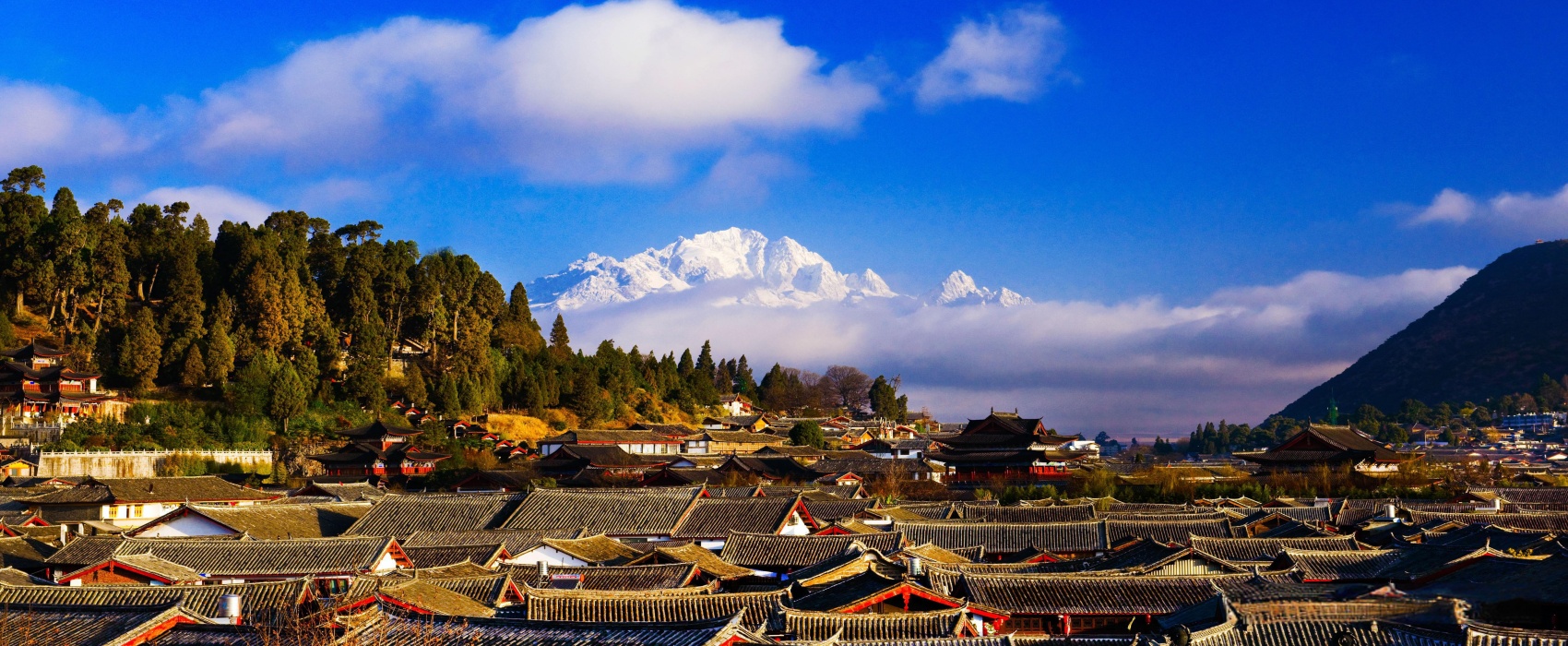Lijiang Ancient Town is the central town of Lijiang Naxi Autonomous County in Yunnan Province, a well-preserved ethnic minority ancient town with a rich cultural heritage. Perched at an altitude of 2,400 meters (7,874 feet) on the plateau, the town rests against the lush Lion Hill to the west, Elephant Hill and Golden Ridge Hill to the north, and overlooks vast fertile plains to the southeast. Crystal-clear streams meander through the city, giving it the appearance of a giant inkstone—hence its alternative name, Dàyàn Town.
Lijiang Ancient Town covers an area of 3.8 square kilometers (912 acres) and was first established during the late Song and early Yuan dynasties (1271-1368), boasting over 800 years of history. Since Kublai Khan, the founding emperor of the Yuan Dynasty, established his capital here, Lijiang rapidly developed into a political, cultural, and educational hub of its time, playing a vital role in trade exchanges between Yunnan, inland China, Tibet, India, and other Asian nations. Today, strolling through the streets of Lijiang Ancient Town, one encounters an array of exquisite handicrafts everywhere, evoking the prosperity and vibrancy of the ancient city’s past.
Lijiang Ancient Town, nestled against mountains and beside rivers, offers an exceptionally valuable case study for the research of ancient town architecture. Its unique geographical location, historical background, and multi-ethnic residential environment make it one of the most distinctive ancient towns.
Lijiang Ancient Town stands as the only wall-less ancient city, a fact rooted in a thought-provoking tale. For over five centuries, Lijiang was ruled by the hereditary Mu family. Placing the character “Mu” (representing the Lijiang Governor) within a square frame (symbolizing city walls) forms the character “Kun,” meaning ‘trapped’ or “in a predicament.” This symbolically implied that the Mu family and their descendants would forever be trapped like rats in a hole. Because of this symbolic meaning, Lijiang Old Town was never built with city walls.
Due to the fusion of multiple ethnic cultures and the progressive spirit of the Naxi people, the architecture here blends the essence of Han, Bai, and Tibetan styles, forming a unique Naxi style. The ancient town features a free and flexible layout with densely packed, diverse houses and narrow, winding alleys. The Naxi people emphasize interior decoration; houses are mostly wooden structures with tiled roofs, spacious and practical, featuring courtyards. Each household’s doors and windows are carved with vivid depictions of people and animals, while courtyards flourish with lush flowers, plants, and trees. Living in such a beautiful and comfortable environment is truly delightful.
Lijiang Ancient Town is a city that thrives on water, which flows through it like blood. Black Dragon Pool serves as the primary water source for the ancient town, branching into numerous streams that flow into every household and street. Thanks to this intricate network of water channels, the town is shaded by willow trees and graced by nearly 350 bridges, each with its own unique style and character, some dating back to the Ming and Qing dynasties. The locals utilize water in a highly scientific manner. From upstream to downstream, each well features three distinct water outlets. The first outlet supplied drinking water, the second was used for washing vegetables and fruits, and the third was reserved for laundry. This system not only met residents’ needs but also imbued the ancient town with a gentle beauty. While Lijiang Old Town is often hailed as the “Venice of the East” and the “Suzhou of the Plateau,” its significance extends far beyond these titles. Once you explore this ancient town, it will capture your heart and leave an indelible impression for a lifetime.
The heart of Lijiang Ancient Town is Four Directions Square, with four main streets radiating outward from it in all directions. Countless alleys crisscross the area, forming a network that connects every corner of the ancient town. The streets are paved with locally sourced blue-gray stone slabs, remaining free of mud during the rainy season and dust-free in dry weather. These large, finely textured stones add to the ancient and mysterious charm of the town. At night, the water gate in the town center opens, allowing water to flow through the streets, keeping the ancient town clean. This use of water is an integral part of daily life for the residents of Lijiang Ancient Town.
On December 3, 1997, Lijiang Ancient Town was inscribed on the UNESCO World Heritage List by the World Heritage Committee. Today, this captivating ancient town has become a renowned tourist destination, celebrated for its traditional ethnic customs, distinctive architectural style, and stunning natural scenery.
For more travel information, contact 365 China Travel guides. >>>apply now


